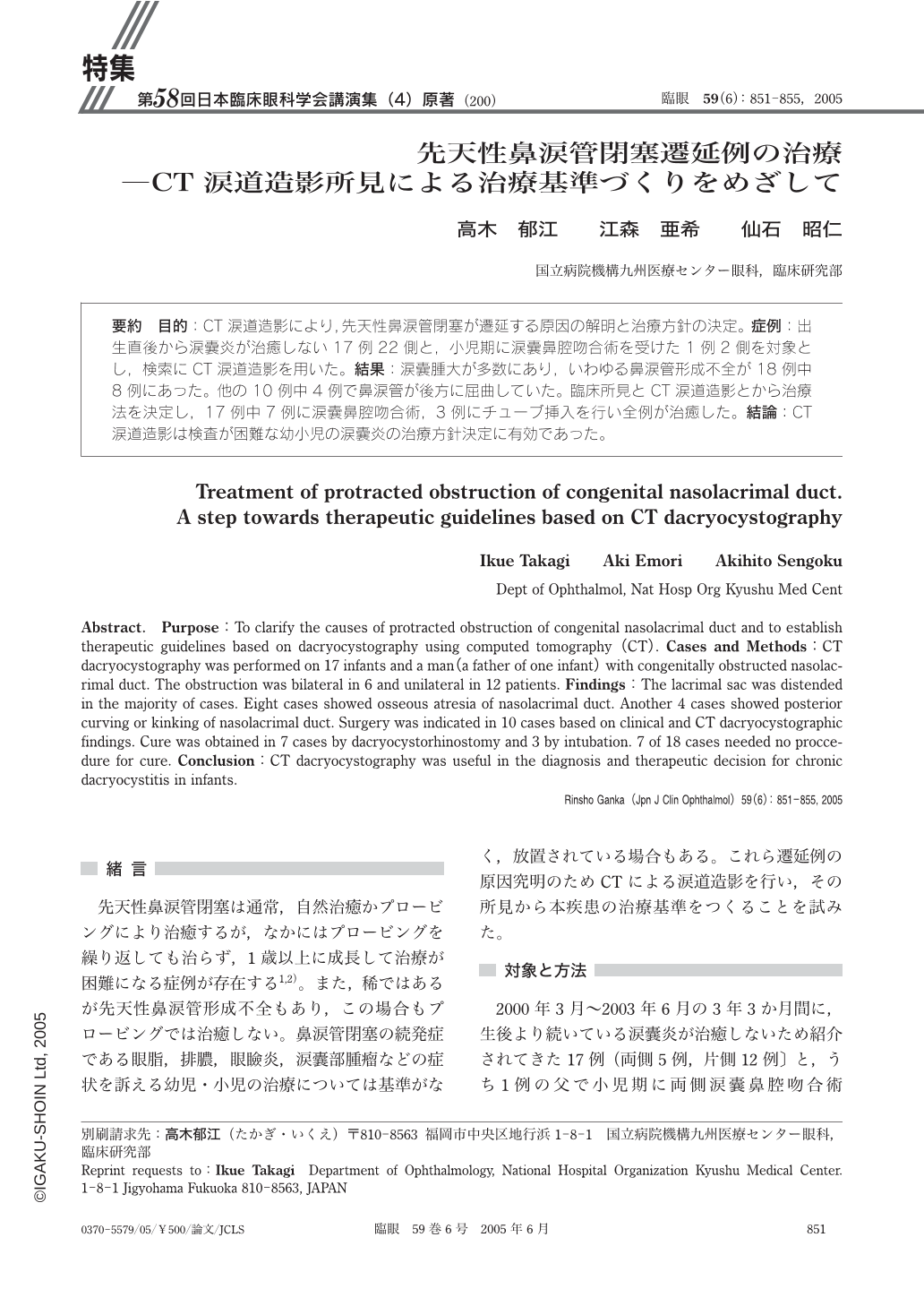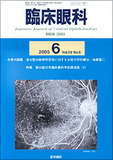Japanese
English
- 有料閲覧
- Abstract 文献概要
- 1ページ目 Look Inside
目的:CT涙道造影により,先天性鼻涙管閉塞が遷延する原因の解明と治療方針の決定。症例:出生直後から涙囊炎が治癒しない17例22側と,小児期に涙囊鼻腔吻合術を受けた1例2側を対象とし,検索にCT涙道造影を用いた。結果:涙囊腫大が多数にあり,いわゆる鼻涙管形成不全が18例中8例にあった。他の10例中4例で鼻涙管が後方に屈曲していた。臨床所見とCT涙道造影とから治療法を決定し,17例中7例に涙囊鼻腔吻合術,3例にチューブ挿入を行い全例が治癒した。結論:CT涙道造影は検査が困難な幼小児の涙囊炎の治療方針決定に有効であった。
Purpose:To clarify the causes of protracted obstruction of congenital nasolacrimal duct and to establish therapeutic guidelines based on dacryocystography using computed tomography(CT). Cases and Methods:CT dacryocystography was performed on 17 infants and a man(a father of one infant)with congenitally obstructed nasolacrimal duct. The obstruction was bilateral in 6 and unilateral in 12 patients. Findings:The lacrimal sac was distended in the majority of cases. Eight cases showed osseous atresia of nasolacrimal duct. Another 4 cases showed posterior curving or kinking of nasolacrimal duct. Surgery was indicated in 10 cases based on clinical and CT dacryocystographic findings. Cure was obtained in 7 cases by dacryocystorhinostomy and 3 by intubation. 7 of 18 cases needed no proccedure for cure. Conclusion:CT dacryocystography was useful in the diagnosis and therapeutic decision for chronic dacryocystitis in infants.

Copyright © 2005, Igaku-Shoin Ltd. All rights reserved.


